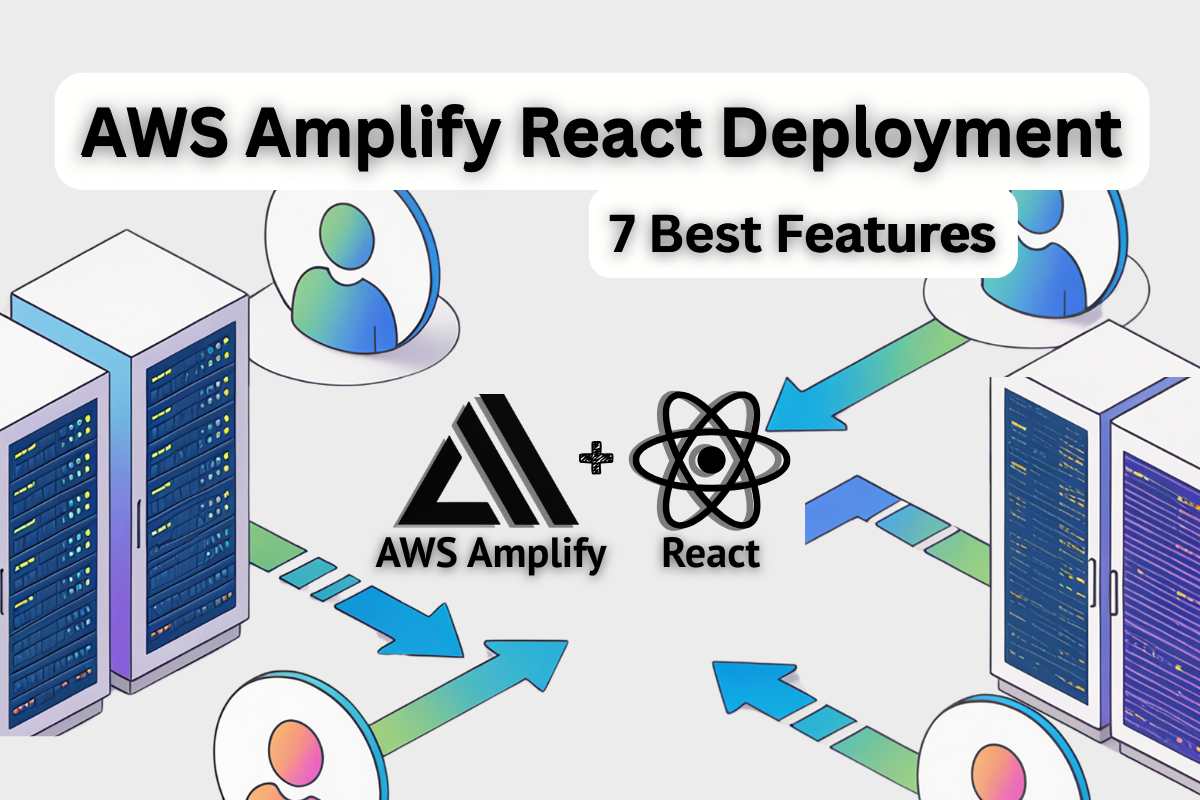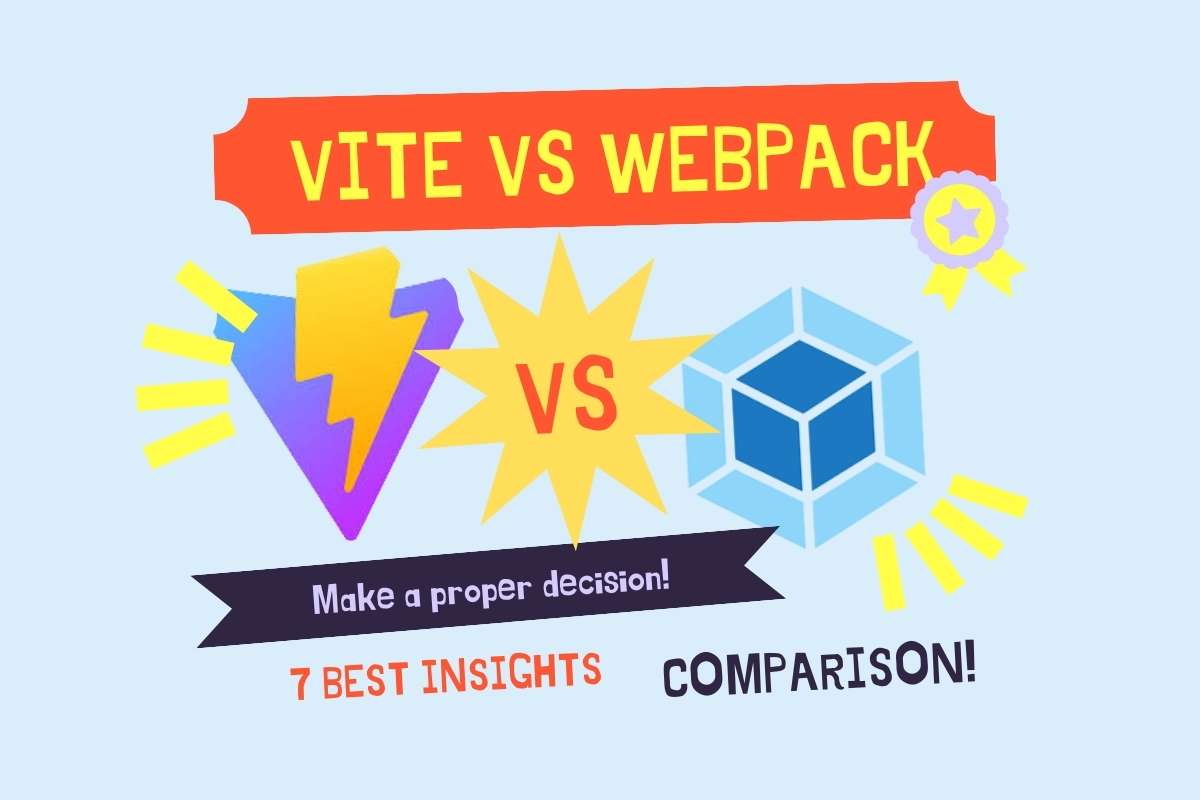Ever mix up API Gateway vs Load Balancer? They sound kinda similar, but they’re doing different jobs in modern apps.
An API gateway provides a single entry point while handling authentication, routing, and data transformation.
A load balancer, on the other hand, distributes network traffic across multiple servers to prevent overloading and ensure high availability.
In this article, I’ll discuss 5 differences between API Gateway vs Load Balancer, common use cases, and five popular interview questions.
What is an API Gateway?
API Gateway stays at the front door for your APIs! Instead of letting each service handle incoming requests (headers, tokens, rate limits), the API Gateway takes the hit. It handles stuff before it even touches your backend.
Here’s what API Gateway actually does:
- Routes requests to the right service.
- Talks in different protocols — HTTP, WebSocket, gRPC.
- Checks if you’re allowed — auth.
- Logs stuff. Handles retries. Even caches!
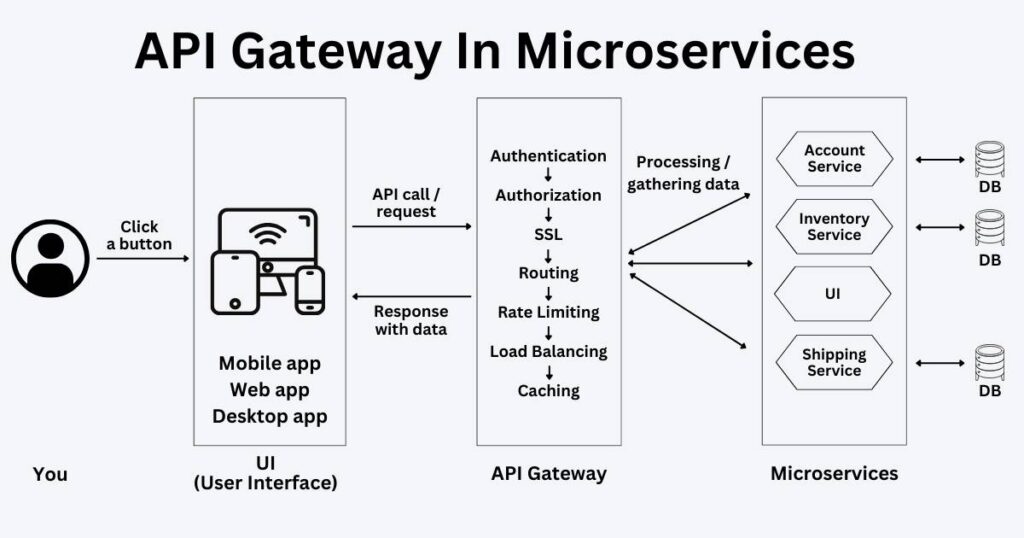
The API Gateway saves the dev team’s sanity. It takes all that traffic, cleans it up, and sends it where it needs to go. Also — if a new service pops up (say, image compression), you just tell the gateway. No one else needs to know! Read more about “What Is an API Gateway in Microservices — 7 Game-Changing Benefits“!
What is a Load Balancer?
A load balancer spreads network traffic evenly. It distributes incoming network traffic across multiple servers to ensure no single server gets overwhelmed. It acts as a reverse proxy, presenting a virtual IP address representing your application to clients.
Load balancers are super important for three main reasons:
- They keep your applications available 24/7
- They help your system handle more users
- They add an extra layer of security
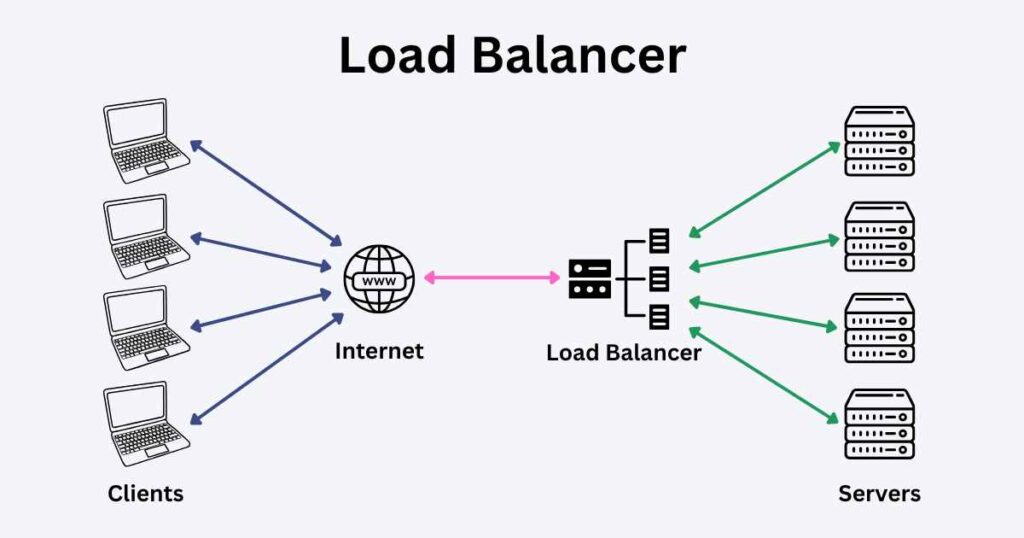
When a user tries to access your website or app, the load balancer intercepts this request before it hits your servers. It then decides which server should handle the request based on different factors like server health and current workload.
If one server crashes or gets too busy, the load balancer automatically redirects traffic to other available servers. This prevents downtime and keeps everything running smoothly.
Load balancers are an absolute MUST-HAVE for any serious web application. They keep websites running smoothly even during traffic spikes.
5 Differences Between API Gateway vs Load Balancer
Let’s dive right in!! As architects talking about system design, do not mix API gateways and load balancers. These two components serve totally different purposes in your tech stack, even though they might seem similar at first glance.
1. Purpose And Functionality
At their core, API gateways and load balancers have fundamentally different jobs in your system architecture.
A load balancer spreads incoming traffic across many servers. It focuses on sharing connections between healthy servers, preventing server overload. It also sends traffic elsewhere when servers go down. Load balancers often work inside your system to spread traffic between copies of the same service.
Meanwhile, modern apps need someone to check IDs, enforce rules, and know the party schedule. That’s why API gateways can look at the path, headers, cookies, or query strings.
An API gateway serves as the one entry point for all API requests, no matter which backend service they need. It faces the public and handles outside traffic from different clients. Learn more about “What Is an API Call? Everything You Need to Know in 5 Minutes“! API gateways handle routing API requests, controlling who gets access, and tracking how people use your APIs
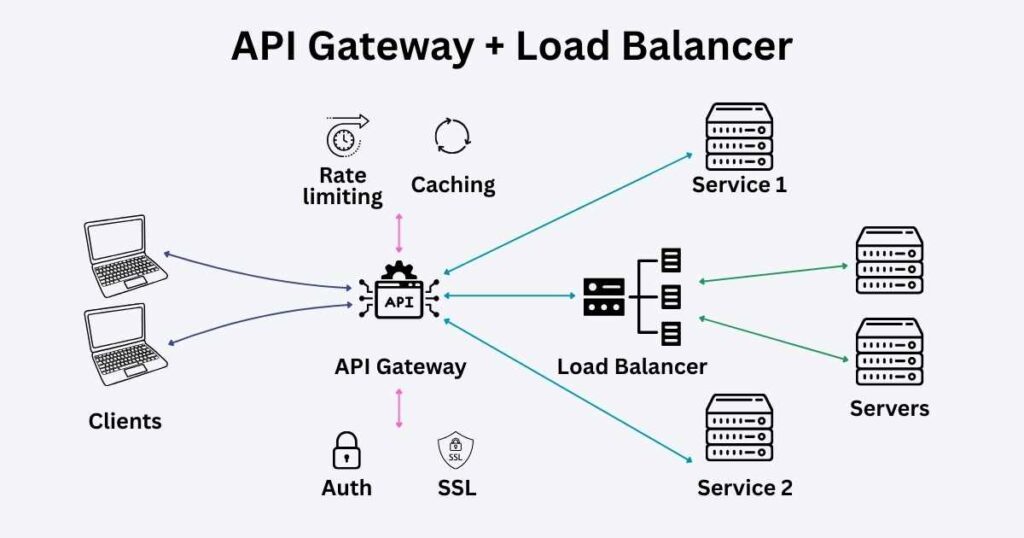
For the best performance, use both tools together. The gateway handles API requests while load balancers spread traffic across many gateway instances or backend services. This makes applications faster, more scalable, and reliable.
2. Layer of Operation — OSI Layer
The OSI Model breaks down how computers talk to each other into 7 simple steps. Each layer has its job, from plugging in the cable (Physical Layer – Layer 1) all the way up to reading your messages and web requests (Application Layer – Layer 7).
An API Gateway works only at Layer 7, the Application Layer. It understands what the request is asking for. It reads the actual message, not just the address. It gets deep into your app.
API Gateways can handle protocols like HTTP/2, HTTPS, WebSocket, and even gRPC. API Gateways are great when you want to block stuff, limit traffic, or add login checks. They’re built to understand the app and help it stay healthy.
A Load Balancer usually works at Layer 4, the Transport Layer, but it can also do some Layer 7 stuff. At Layer 4, it doesn’t care what’s inside the traffic. It just moves (routes) it around based on IP address or port number.
Load Balancers are super fast because they don’t try to understand the data. But they’re not the best choice if you need something secure, custom, or smart. It’s like forwarding your mail without opening the envelope — fast but clueless.
So yeah, layer matters!! Use a load balancer if speed is your concern. Use an API Gateway if you need control and more app-level features.
3. Feature Breadth: Authentication, Rate Limiting, Throttling, Payload Transformation, Caching
When comparing API gateways vs load balancers, the feature breadth is where we see the differences!
API gateways come loaded with authentication options — JWT, OAuth, API keys — all baked right in. No extra work needed! Load balancers are pretty clueless about auth on their own. They’re typically just passing through data without touching it.
API gateways are the clear winners for rate limiting and throttling. They can cap requests using token bucket algorithms to prevent API abuse and service overload. When limits are exceeded, they return 429 errors and help clients retry. Load balancers don’t have this capability — they’ll happily send all traffic to your backend until it crashes (not cool!).
Payload transformation is another area where API gateways shine. They can modify headers and body content before and after routing, which is super helpful for version compatibility and data shaping. Load balancers typically just pass through data without touching it.
And don’t get me started on caching! Caching creates huge performance differences between these tools. API gateways support response-level caching with configurable TTL settings, dramatically cutting latency for repeated calls. Load balancers have zero built-in caching — every request hits your backend servers regardless of how often the same data is requested.
| Feature | API Gateway | Load Balancer |
|---|---|---|
| Authentication | Built-in support | External integration required |
| Rate Limiting | Native capability | Not supported |
| Payload Transformation | Full request/response modification | Pass-through only |
| Caching | Response caching with TTL | No caching |
If you need any app-level features, an API gateway is your go-to. Load balancers are simpler — they do one thing (distribute traffic) and do it well. Many production systems actually use both with an API gateway handing the smart stuff and load balancers behind for traffic distribution.
Remember, these ARE NOT just nice-to-have features! Authentication protects your services from unauthorized access. Rate limiting prevents abuse and DoS attacks. Payload transformation enables version compatibility. Caching reduces latency and backend load. All critical for modern, robust API architectures.
4. Use Cases — API Gateway vs Load Balancer
Let’s talk real use cases. Both tools move traffic, but they do it in totally different ways.
API gateways shine in microservice architectures. They act like the middleman between your users and all the services behind the scenes. An API gateway handles all the routine and redirects requests to the right place when your app is split into dozens of small services (like Netflix and Amazon do it).
Security is another area where API gateways are great. They check if users are who they say they are before letting them into your system. You don’t have to build security checks into every microservice — the gateway handles it all in one place!
API gateways also manage your APIs. They apply rate limits, cache, and transform data. This is super helpful when running a public API that many different apps use.
Load balancers mainly handle heavy traffic by spreading it across multiple servers. When your website gets popular, one server can’t handle all your visitors. A load balancer makes sure no single server gets overwhelmed while others sit around doing nothing.
Scalability is where load balancers really prove their worth. As your app grows, you add more servers to handle more users. The load balancer automatically detects these new servers and sends traffic their way. This means your app grows without downtime or performance issues.
For businesses where every second of downtime means lost money, load balancers are absolutely essential. They constantly check if your servers are healthy and up. If one server starts acting up or crashes completely, the load balancer immediately stops sending traffic its way and redirects to healthy servers. Your users might not even notice there was a problem.
You don’t always have to choose between an API gateway and a load balancer. In many real-world setups, they work together like peanut butter and jelly. The load balancer handles the raw traffic distribution while the API gateway manages all the API-specific stuff. For many applications, you’ll probably end up using both as your system evolves.
5. Complexity and Cost: API Gateway vs Load Balancer
Load balancers are simple, light, and cheap. They charge hourly, so you know what to expect. No surprise invoices when traffic spikes. Also, they’re crazy fast — just 1 to 3ms added latency, tops.
API Gateways come with complex setups and per-request costs. They slow things down (5–30ms latency easy), especially when you pile on filters, auth checks, and routing rules. You can’t ignore that if you’re building something like games or voice chat apps — you’ll feel that lag HARD.
Scaling-wise, API gateways scale huge — millions of RPS (requests per second). But you gotta configure and monitor. They’re high-maintenance. Load balancers scale, too, but they do it with brute horizontal scaling.
All that said, complexity = cost. Not just dollars — dev hours, bugs, upkeep!
5 Interview Questions — Discussion Points
Below, 5 must-know questions when talking API Gateway vs Load Balancer with quick answers, config ideas, and tips for answering like a PRO. Find more “Most Recent Frontend Interview Questions With Answers“!
1. What’s the difference in responsibilities between API Gateway and Load Balancer?
API Gateway handles stuff at Layer 7 (L7) — that’s app-level logic. It routes based on URLs, methods, headers, and even auth tokens. Think: smart traffic cop.
Load Balancer (LB) is all about Layer 4 (L4) or sometimes L7. It balances traffic to keep things stable. It doesn’t care what’s in the request. It just sends it where needed.
Tip: Say: “I see Gateway as the API’s front door, LB as traffic distribution behind it.”
2. Why choose an API Gateway for microservices?
It’s all about service abstraction! I go with an API Gateway when I’m managing tons of services. Microservices are messy without a layer that can handle routing, rate limits, auth, and service discovery. That’s the Gateway’s job.
Tip: Say: “It lets teams ship services independently while keeping a unified entry point.”
3. How does a Load Balancer improve high availability?
LBs check your app’s health (via /health endpoints usually). If one server fails, the LB reroutes to a healthy one.
I also use LBs for zone redundancy. If one AZ goes down? The traffic just flows to another.
Tip: Say: “LBs act like a smart switchboard. One server dies? No one notices!”
4. How would you integrate both in an architecture?
I usually stick the API Gateway at the edge. It handles routing, checks tokens, rate limits, etc. Then it passes clean traffic to a Load Balancer, which spreads it across service instances.
Gateway goes on the outermost layer. It exposes REST endpoints. Handles throttling, auth, routing. Load Balancer is deeper. It balances traffic between backend servers or containers.
Tip: Say: “It’s a clean separation of concerns. Gateway filters and routes, LB spreads the load.”
5. What are the performance trade-offs between API Gateway vs Load Balancer?
Gateways add latency because they inspect every request. But you get tons of power: auth, rate limiting, etc. LBs don’t inspect as much. They’re lightweight and fast.
I always remind them — don’t use a Gateway if you just need raw throughput. Use it when you’re exposing APIs.
Tip: Say: “Gateway adds brains, LB adds brawn. Use each where they shine.”
Conclusion — API Gateway vs Load Balancer
Understanding the differences between API Gateway vs Load Balancer helps you build systems that are secure, fast, and reliable. There’s no one-size-fits-all answer here. Your specific needs should drive your choice.
API gateways and load balancers might seem similar at first glance, but now you know they’re different tools for different jobs. And sometimes, using both together gives you the best of both worlds.


